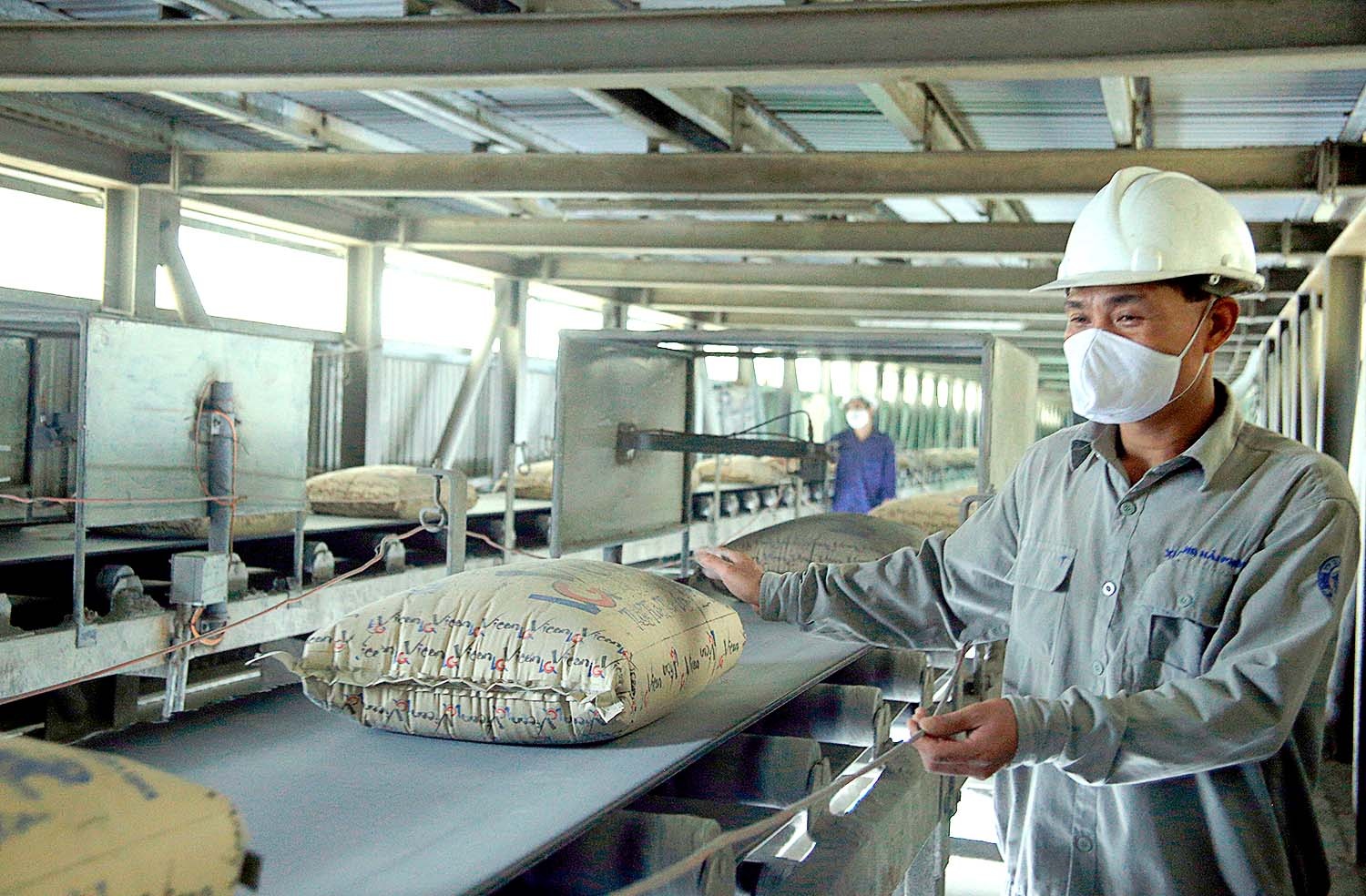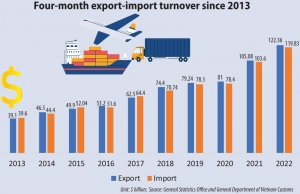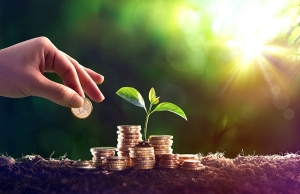Firms gearing up to boost exports
For the first time, on March 19, a batch of nearly 20 tonnes of fresh sugarcane from the northern province of Hoa Binh left Vietnam heading to the US market, facilitated by the privately held Tien Ngan Trade Investment Co., Ltd.
Despite the modest value, the move heralds strong prospects for sugarcane and other agricultural items from Hoa Binh province.
Nguyen Le Diep, the company’s director, revealed that it took six months of negotiations to meet the partner’s strict technical standards.
 |
| Amidst the huge supply, boosting exports has become a crucial task for cement producers |
Notably, accompanying the fresh sugarcane batch were 10 cane pressing machines, which hints at how the products will be consumed in the foreign market.
With a wealth of experience exporting hundreds of tonnes of fresh sugarcane to the EU, South Korea, and lately the US market, Tien Ngan Co., Ltd. is set to export 300-500 tonnes of fresh sugarcane this year.
The fresh export shipment came amidst a gloomy export order picture since late 2022, showing signs of a possible comeback of orders thanks to firms’ consistent strides.
| Several key sectors are hopeful for the comeback of export orders starting from Q2 this year. |
On March 17, again for the first time, nearly 20 tonnes of durian from Can Tho city in the Mekong delta were exported to China through official channels.
Meanwhile, Lotus Cement and Commodities Trading Corporation JSC based in Ho Chi Minh City is expediting an order to export 55,000 tonnes of cement to Central America.
Lotus JSC’s vessel has taken cement products from the Thanh Thang Cement plant based in Ha Nam province, heading to Central American markets.
Lotus Corporation and Thanh Thang Cement's collaboration in fast-tracking the export shipment offers positive signals for a rebound in the Central American region this year.
Last year, the cement industry’s total capacity approximated 108 million tonnes, of which domestic consumption only made up 63 million tonnes, and the export volume accounted for nearly 31 million.
In 2023, cement businesses are diligently looking for customers to boost their export volumes.
Vietnam has been negatively affected by the global trade growth slowdown. In the first two months this year, the nation’s exports to the US shed nearly 20 per cent to $13 billion, with key sectors such as computers, machinery and equipment, clothing, footwear, seafood, wood, and wooden furniture all declining sharply.
Several key sectors, however, are hopeful for the comeback of export orders starting from Q2 this year.
It is encouraging that despite the forecast of a sharp decline in new electronics orders worldwide from the second half last year, the export of handsets and devices posted a slight increase of 5.2 per cent on-year in the first two months, reaching $9.21 billion. This is one of a few export groups still maintaining growth momentum.
Trade experts, however, gave a warning to local exporters that the de-globalisation trend is obstructing exports amidst ever-burgeoning safeguard measures applied by countries around and world.
Tran Thanh Hai, deputy general director of the Agency of Foreign Trade under the Ministry of Industry and Trade noted, “Developed nations are paying growing heed to issues like safety for their consumers, sustainable development, and combating climate change, driving them to institute new standards and regulations related to the supply chain, green materials, labour, and the environment that force export firms to seek compliance to uphold orders.”
 | Wide-ranging efforts boost exports Vietnam’s export-import landscape is regaining big momentum on the back of a rebound in domestic production and the growing demand from many foreign markets, with a brighter trade outlook for the economy for the entire year. |
 | Vietnamese export profits boost with green trade The direction of Vietnam’s imports and exports is changing due to a series of green trade revolutions, government policy, and global trends. |
 | Institutions gearing up for green growth revolution Asia’s demand for carbon offsets is increasing as more global supply chains, manufacturing, and banking sectors attempt to reduce their carbon impact – in which Vietnam may be the ideal location for a green investment wave. |
What the stars mean:
★ Poor ★ ★ Promising ★★★ Good ★★★★ Very good ★★★★★ Exceptional
Related Contents
Latest News
More News
- Businesses ramp up production as year-end orders surge (December 30, 2025 | 10:05)
- Vietjet chairwoman awarded Labour Hero title (December 29, 2025 | 13:06)
- How to unlock ESG value through green innovation (December 29, 2025 | 10:03)
- AI reshapes media and advertising industry (December 29, 2025 | 08:33)
- FPT and GELEX sign deal to develop blockchain tech for global markets (December 29, 2025 | 08:29)
- Vietnam’s GDP forecast to grow by 9 per cent in 2026 (December 29, 2025 | 08:29)
- Women entrepreneurs are key to Vietnam’s economic growth (December 29, 2025 | 08:00)
- Vietnam's top 500 value-creating enterprises announced (December 27, 2025 | 08:00)
- The PAN Group shaping a better future with ESG strategy (December 26, 2025 | 09:00)
- Masan Consumer officially lists on HSX, marking the next phase of value creation (December 25, 2025 | 13:20)

 Tag:
Tag:



























 Mobile Version
Mobile Version